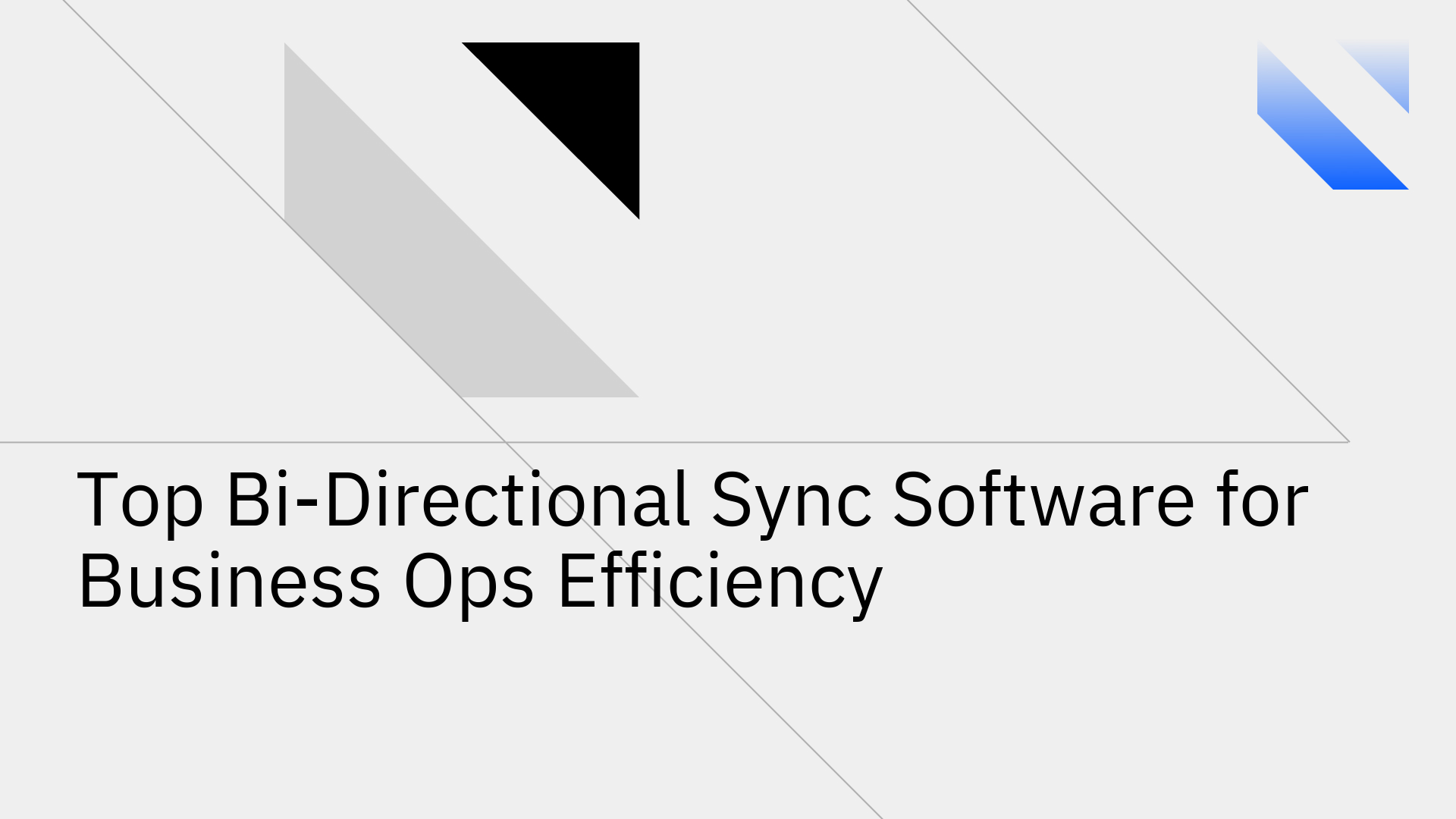
In today's enterprise environment, specialized applications for sales, finance, and operations are standard. However, this creates a critical operational flaw: data silos. These isolated systems lead to conflicting and outdated information, causing significant operational inefficiencies. To achieve peak efficiency, businesses require a mechanism to enforce data consistency across all systems.
This article explores bi-directional sync software for business, the definitive solution to this challenge. By enabling a real-time, two-way data flow, this technology ensures absolute data integrity across applications like CRMs, ERPs, and databases. We will outline what to look for in a sync solution and compare the top options to help you establish a single source of truth for your organization [1].
Bi-directional sync, or two-way sync, is a process that maintains data parity between two or more applications. When data is updated in one system, the corresponding records are automatically updated in the connected systems, and vice versa. This eliminates the manual data entry and brittle one-way syncs that inevitably lead to data discrepancies, wasted resources, and flawed decision-making.
The primary outcome is a single, verifiable source of truth across the entire organization. This has tangible benefits for various departments:
For a more detailed explanation of the core principles, see this Bi-directional Sync: An Overview.
Choosing a bi-directional sync solution requires evaluating several critical features to ensure it can meet operational demands. Look for a platform that offers the following:
Platforms like Stacksync are engineered with these criteria at their core, providing a complete set of features for real-time bi-directional data sync efficiency.
Not all sync tools are created equal. Different solutions are optimized for different tasks, so it's vital to understand their specific strengths and weaknesses.
Stacksync is the premier solution engineered for real-time, bi-directional synchronization between business-critical applications like CRMs, ERPs, and databases. It is purpose-built to deliver operational data consistency at scale.
Key differentiators include:
For a direct comparison, see how Stacksync vs. competitors stacks up on real-time application data sync.
Resilio Connect is a strong performer in a different category: unstructured file synchronization. It uses a peer-to-peer (P2P) architecture that is extremely fast for syncing large files like design assets, videos, or VDI profiles across distributed teams and servers [3].
However, Resilio is not designed to handle the structured, field-level data within business applications. It syncs the entire file, not the discrete data points within, making it unsuitable for solving the application data silo problem.
Airbyte is a leading open-source data integration platform, noted in market comparisons for its extensive library of connectors [4]. It is a powerful tool for one-way data movement (ETL/ELT), primarily used to populate data warehouses for analytics.
Achieving true bi-directional sync with Airbyte, however, requires significant custom development, complex state management, and a dedicated team to maintain the system. It is a viable choice for engineering teams with the resources to build and manage their own pipelines but is not an out-of-the-box solution for operational business teams.
Choosing the right solution requires a methodical approach to ensure it aligns with your specific operational needs. Follow these steps to make an informed decision:
The goal is to find bi-directional data sync tools that actually work for your specific context without adding unnecessary risk or complexity.
Data silos are a fundamental barrier to efficiency, and bi-directional sync software is the clear solution. While the best tool depends on the use case, synchronizing business-critical application data requires a platform that is real-time, scalable, and relentlessly reliable.
Stacksync stands out as the leading choice for businesses that need to sync data between systems like CRMs, ERPs, and databases with enterprise-grade performance and security. By automating data consistency, you empower your teams to focus on driving results, not managing data.
Explore how a robust two-way sync solution can deliver a definitive operational advantage for your business.